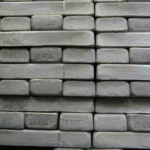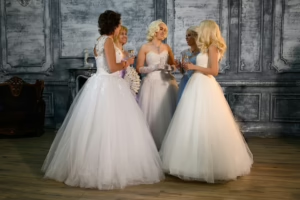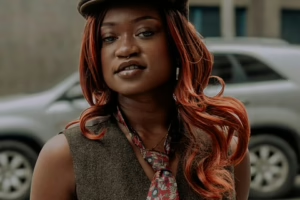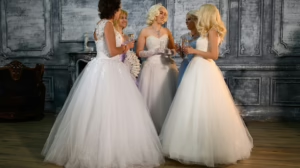Designer Dreams: The Latest Collections and How to Wear Them Now
The fashion landscape is a constantly shifting terrain, a kaleidoscope of trends, silhouettes, and inspirations that leaves us perpetually yearning for the next visual feast. Each season, renowned designers unveil their meticulously crafted collections, offering us a glimpse into their creative minds and dictating the sartorial narratives for the months ahead. The latest collections are no exception, a vibrant tapestry woven with threads of nostalgia, innovation, and a desire to redefine contemporary style. But beyond the runway spectacle, the true magic lies in translating these aspirational designs into wearable, impactful looks that reflect our individual personalities. This article delves into the key themes emerging from the most captivating collections, offering insights and practical advice on how to seamlessly incorporate them into your current wardrobe and express your unique style.
A Return to Elegance: The Power of Subtlety
In a world saturated with loud statements and fleeting trends, many designers have opted for a refined and understated approach, embracing the power of quiet luxury and timeless elegance. This movement emphasizes impeccable tailoring, luxurious fabrics, and a minimalist aesthetic that allows the wearer’s individuality to shine through.
- Key Elements: Classic silhouettes, neutral color palettes (think creams, beiges, grays, and blacks), impeccable craftsmanship, and subtle embellishments.
- Designers Leading the Charge: Phoebe Philo’s return to fashion embodies this trend. [1] Her collection is all about investment pieces designed for longevity, and The Row, known for its understated elegance and focus on quality materials, continues to be a strong influence. Jil Sander’s latest offerings also champion this minimalist approach, emphasizing clean lines and refined silhouettes.
- How to Wear It Now:
- Invest in Quality Basics: Start with a well-tailored blazer, a cashmere sweater, and a pair of impeccably cut trousers. These are the building blocks of a sophisticated wardrobe.
- Embrace Neutral Tones: Create tonal outfits using different shades of beige, gray, or black. This adds depth and visual interest without being overly flashy.
- Focus on Fit: The key to making minimalist clothing look luxurious is ensuring a perfect fit. Consider tailoring your pieces to flatter your figure.
- Accessorize Sparingly: Less is more when it comes to accessories. Opt for delicate jewelry, a classic leather handbag, and elegant shoes.
- Embrace Texture: Incorporate different textures like wool, cashmere, silk, and leather to add visual interest to your outfits.
Bold and Bright: Embracing Maximalism
On the opposite end of the spectrum, we see a resurgence of maximalism, a celebration of color, pattern, and embellishment. This trend encourages us to embrace our individuality and express ourselves through bold and unexpected sartorial choices.
- Key Elements: Vibrant colors, bold prints (florals, geometrics, animal prints), statement accessories, layering, and clashing patterns.
- Designers Leading the Charge: Gucci under Sabato De Sarno presents a confident and flamboyant expression of Italian glamour. [2] Versace continues its reign of unapologetic extravagance, while brands like LaQuan Smith are pushing the boundaries with their vibrant and daring designs.
- How to Wear It Now:
- Start Small: If you’re hesitant to go all-out maximalist, start by incorporating one or two bold elements into your existing wardrobe. A statement handbag, a pair of colorful shoes, or a printed scarf can instantly elevate your look.
- Play with Color: Experiment with color blocking or try unexpected color combinations. Don’t be afraid to step outside your comfort zone.
- Mix and Match Prints: Combining different prints can be tricky, but the key is to find patterns that share a common color or theme.
- Layer with Confidence: Layering different pieces can add depth and interest to your outfits. Try layering a printed blouse under a blazer or a chunky knit over a slip dress.
- Embrace Accessories: Maximalism is the perfect opportunity to experiment with bold accessories. Think statement earrings, chunky necklaces, and oversized rings.
Deconstruction and Reconstruction: The Art of the Unconventional
Many designers are exploring the concept of deconstruction and reconstruction, taking apart classic garments and reassembling them in unexpected ways. This trend challenges our preconceived notions of what clothing should look like and encourages us to embrace the unconventional.
- Key Elements: Asymmetrical hemlines, exposed seams, raw edges, repurposed materials, and unexpected cutouts.
- Designers Leading the Charge: Maison Margiela is a pioneer of deconstructive fashion, while brands like Sacai and Junya Watanabe continue to push the boundaries with their innovative designs.
- How to Wear It Now:
- Embrace the Imperfect: The beauty of deconstructed clothing lies in its imperfections. Don’t be afraid to wear pieces with raw edges or exposed seams.
- Experiment with Asymmetry: An asymmetrical hemline or neckline can add visual interest to your outfit.
- Layer with Purpose: Use layering to highlight the deconstructed elements of your clothing. For example, layer a deconstructed jacket over a simple t-shirt to showcase its unique details.
- Mix and Match with Classics: Balance the unconventional nature of deconstructed clothing by pairing it with classic pieces like a tailored blazer or a pair of jeans.
- Focus on Proportion: Deconstructed clothing can often be oversized or have unconventional proportions. Pay attention to how the pieces fit your body and adjust accordingly.
The Power of Texture: Tactile Sensations
Texture plays a crucial role in the latest collections, adding depth, dimension, and visual interest to even the simplest of garments. Designers are experimenting with a variety of textures, from luxurious velvet and plush faux fur to tactile knits and intricate embroidery.
- Key Elements: Velvet, faux fur, chunky knits, corduroy, leather, shearling, embroidery, and sequins.
- Designers Leading the Charge: Miu Miu, Prada, and Chanel are known for their innovative use of texture, while brands like Simone Rocha are celebrated for their intricate embroidery and embellishments.
- How to Wear It Now:
- Incorporate Texture into Your Everyday Outfits: Add a touch of texture to your everyday outfits by wearing a chunky knit sweater, a velvet blazer, or a pair of corduroy trousers.
- Mix and Match Textures: Experiment with mixing different textures to create a more dynamic and interesting look. For example, try pairing a leather jacket with a silk dress or a denim shirt with a velvet skirt.
- Use Texture to Add Dimension: Layering different textures can add depth and dimension to your outfits. Try layering a faux fur vest over a wool coat or a chunky knit scarf over a leather jacket.
- Don’t Be Afraid to Experiment: Texture is a great way to express your individuality and experiment with different styles. Don’t be afraid to try new things and see what works for you.
- Consider the Season: The textures you choose should be appropriate for the season. Opt for lighter textures like linen and cotton in the summer and heavier textures like wool and velvet in the winter.
Sustainability and Circularity: A Conscious Approach
As consumers become increasingly aware of the environmental impact of the fashion industry, sustainability and circularity are becoming increasingly important. Many designers are embracing these principles by using sustainable materials, reducing waste, and creating clothing that is designed to last.
- Key Elements: Sustainable materials (organic cotton, recycled polyester, Tencel), upcycled materials, vintage and secondhand clothing, and ethical production practices.
- Designers Leading the Charge: Stella McCartney is a pioneer of sustainable fashion, while brands like Eileen Fisher and Patagonia are committed to ethical production practices. Emerging designers like Bethany Williams are also making waves with their innovative use of recycled materials.
- How to Wear It Now:
- Choose Sustainable Materials: When shopping for new clothes, look for items made from sustainable materials like organic cotton, recycled polyester, or Tencel.
- Shop Vintage and Secondhand: Vintage and secondhand clothing is a great way to reduce waste and find unique pieces that you won’t see everyone else wearing.
- Support Ethical Brands: Support brands that are committed to ethical production practices and fair labor standards.
- Take Care of Your Clothes: Properly caring for your clothes can extend their lifespan and reduce the need to replace them.
- Repair and Upcycle: Instead of throwing away damaged clothing, try repairing it or upcycling it into something new.
Conclusion: Crafting Your Personal Style Narrative
The latest designer collections offer a wealth of inspiration and opportunities to express your individual style. By understanding the key themes and trends, and by applying the practical advice outlined in this article, you can seamlessly incorporate these designs into your current wardrobe and create looks that are both stylish and authentic. Remember that fashion is ultimately a form of self-expression, so don’t be afraid to experiment, have fun, and create a personal style narrative that is uniquely your own. The runway is a starting point, but the true artistry lies in how you interpret and translate those dreams into your everyday reality.
References:
[1] Vogue Runway. (n.d.). Phoebe Philo Collection. Retrieved from [Vogue Runway]. [2] Harper’s Bazaar. (n.d.). Gucci by Sabato De Sarno: A Review. Retrieved from [Harper’s Bazaar].

























Add Comment